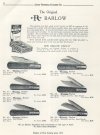At Blade2017 I was talking to a factory about a sure 'nuff economy sodbuster pattern. Something like a barely sub-4" beater, but with a steel that would be useful - say D2. ...
Could the market still tolerate a true work knife at a value price point?
A few years back I'd picked up a yellow Country Cousin based on the D2 steel and it's real good user appeal. Money was tight so only bought one(??? at $29 !!!). Fit and finish were ok - pins not quite flush and a small gap but the walk and talk were very good. Not quite as sharp as I expected but easy enough to reprofile. Then I discovered they had stopped the run of them and put it away. While I don't beat my knives I didn't want this one wrecked, not that I could do that in my lifetime lol. I'd really go for a slightly larger version as well as a good solid Barlow pattern in upgraded steel if that would become available in the not-so-snooty price range.





